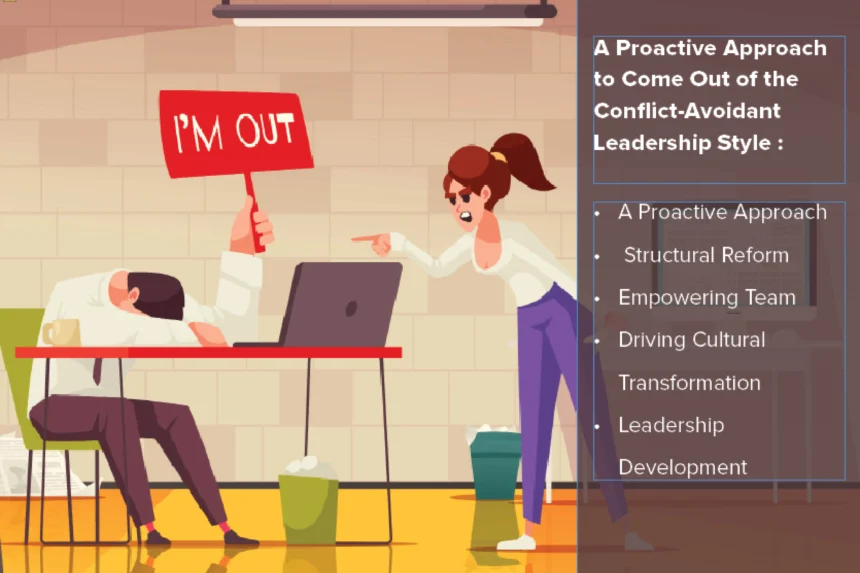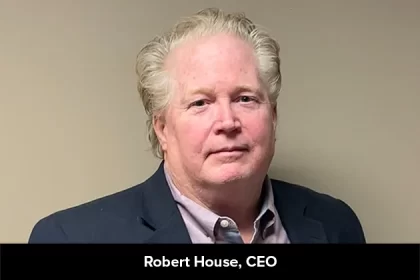Staying away from disagreements isn’t an effective solution to the problem. Avoiding conflicts could actually lead to the amplification of issues, and when it comes to leadership, this avoidance not only aggravates the conflict but also sets a poor leadership example for the team. Leaders’ reluctance to engage in necessary confrontations can threaten organizational health. While initially this creates a superficially pleasant work environment, leaders’ avoidance can lead to unresolved tensions, reduced team productivity and performance, and a drop in overall organizational growth.
The CEO Views can be your ultimate guide to developing business knowledge, as it addresses all aspects of businesses in its discourse. Our strategic, well-researched, and professionally crafted articles, blogs, and profiles allow industry peers to connect at a broad level.
Conflict-Avoidant Leadership: The Mayhem of Staying Calm
Conflict-avoidant leadership often stems from a combination of elevated neuroticism and high agreeableness, preferring harmony over resolving issues. According to neuroscientific studies, the underlying mechanism of conflict avoidance involves increased activity in the amygdala of the leaders’ brains, the center for processing fear. The prospect of confrontational situations triggers a fear-driven reaction, reinforcing avoidance behaviors. As a result of such behavior in leaders, team members experience increased stress due to unresolved issues.
Effective conflict management has always been crucial for group cohesion. Leaders building an ecosystem of roles leaders often cultivate an interdependent and dynamic environment where diverse skills and roles support collective success. By shifting from a “command-and-control” to a “curate-and-coach” approach, leaders create a supportive work environment and nurture shared leadership for a resilient and adaptable organization. However, a conflict-avoidant leader could actually disturb the very core of supportive leadership by deliberately neglecting the issues among team members and amplifying the suppressed tensions.
Teams led by leaders who avoid conflict often experience internal strife, underscoring the salience of confronting issues head-on. Although conflict-avoidant leadership may appear benign, it can have negative consequences on organizational dynamics. By mitigating potential disagreements, these leaders cultivate an organizational culture that prefers staying hooked to the status quo over taking risks. However, despite the negative outcomes of avoiding conflicts in leadership, there are some positive sides to it as well.
Lead Soft, Win Big: The Advantage of Avoiding Unnecessary Conflicts
Leaders with high interpersonal sensitivity often prefer to postpone conflicts and step out of difficult conversations rather than confronting. The impacts of conflict-avoidant leadership extend to team dynamics, reducing team members’ problem-solving capability and their emotional resilience. Leaders who protect their teams from natural conflicts deprive them of opportunities to develop emotional resilience and learn from conflict resolution. It impedes the emotional growth of the members, leaving them unprepared to navigate any challenging scenario in the future. They lose their collective ability to address complex issues, hampering overall organizational performance.
But is conflict-avoidant leadership all bad? Despite the negative consequences of conflict-avoidant leadership, avoiding unnecessary tensions and conflicts could also result in something positive. This leadership style harnesses innovation and creativity within teams. Sounds surprising? Here is how. Leaders who avoid conflicts often suppress productive tension, driving creative problem-solving.
Avoiding conflict can be useful in buying some additional time to think and collect more information or compose oneself before addressing the issue. Often, team members engage in conflicts over trivial matters that do not always require immediate action to resolve. In such a scenario, avoiding is the best strategy as it prevents unnecessary aggravation of minor issues. This strategy is effective in volatile situations where addressing a conflict might lead to negative repercussions. When the emotional state of the involved parties is too charged, avoiding the issues can be a strategic move to prevent escalation.
A Proactive Approach to Come Out of the Conflict-Avoidant Leadership Style
In today’s world of complexities, who doesn’t like to live a stress-free life? Whether it is at the personal or the professional level, we all look for ways to avoid any unwanted conflict or tension.
Organizational leaders are at the helm of high-level management, day-to-day operations, and often both. Shouldering a range of responsibilities also includes conflict management. Working in a place where conflict is common can be exhausting for leaders. Hence, they often choose to avoid conflict to reduce workplace stress. However, this could lead to suppressed tensions, escalated anger among team members, reduced productivity, loss of trust from leaders, and poor organizational performance. Fixing the consequences driven by a conflict-avoidant leadership includes the following:
-
Director’s Role in Conflict Resolution: A Proactive Approach
A director role for leaders who avoid conflict is a proactive approach to prevent and resolve conflict. Standing at the helm of organizational leadership, directors should engage in active mediation through clear communication, empathetic listening, and establishing expectations. Rather than avoiding a conflict entirely, directors should facilitate open communication, remain neutral in mediation, and find a common ground to turn conflict into collaboration.
When directors clearly outline a conflict resolution process, they can address issues constructively. By using active mediation, they remain neutral and make confident decisions. Encouraging respectful communication helps team members feel safe to share their concerns. A skillful manager with proactive conflict resolution skills can successfully eliminate tense workplace situations. Instead of avoiding issues and damaging employee morale and productivity, directors could reframe conflict and try behavioral experiments to ensure they establish a productive work culture.
-
Structural Reform
Structural changes are often critical steps in addressing conflict avoidance. Forced engagement points are structured opportunities where leaders should address issues rather than avoiding them. Through these mechanisms, leaders organize performance calibration meetings, formalize conflict resolution protocols, and implement decision-making frameworks with defined timelines. These structures create accountability and establish conflict resolution as an organizational norm by removing the possibility of indefinite deferral. Conflict often arises when different departments have incompatible goals, and by changing the performance management system, leaders could evaluate both parties on common outcomes. Also, by reducing high interdependence between organizational units, leaders could separate conflicting groups. With clear institutionalized rules and job descriptions for specified roles, leaders could help prevent conflicts from occurring.
-
Empowering Team
Team empowerment complements leadership-driven efforts by reducing reliance on conflict-avoidant leaders to resolve every issue. Clear decision-making frameworks and escalation protocols allow teams to address conflicts directly. This ensures important matters are resolved even if the leaders are hesitant. Empowered teams maintain momentum and accountability within the organization, dealing with the negative effects of conflict avoidance.
-
Driving Cultural Transformation
Cultural transformation is equally crucial in dealing with the conflict-avoidant leadership. Organizations must foster a culture that values open communication and feedback to normalize constructive confrontation. Regular feedback sessions and open forums for discussion enables direct addressing of issues. Also, celebrating the successful conflict resolution help change leaders’ perceptions of confrontation from something to be avoided to a necessary organizational behavior. These practices establish conflict resolution as an integral part of organization’s identity.
-
Leadership Development
Leadership programs tailored to conflict avoidance needs special considerations. An inner circel of leadership can be an effective leadership development approach to address organizational conflict effectively. Knowing how to assemble a leadership inner circle could help leaders have a diverse, accountable, and trusted support system to enhance their decision-making. On the other hand, leadership programs focused on intrioducing leaders to challenging conflict scenarios in a controlled environment help build confidence incrementally, preparing them to overcome their fears of confrontation.










